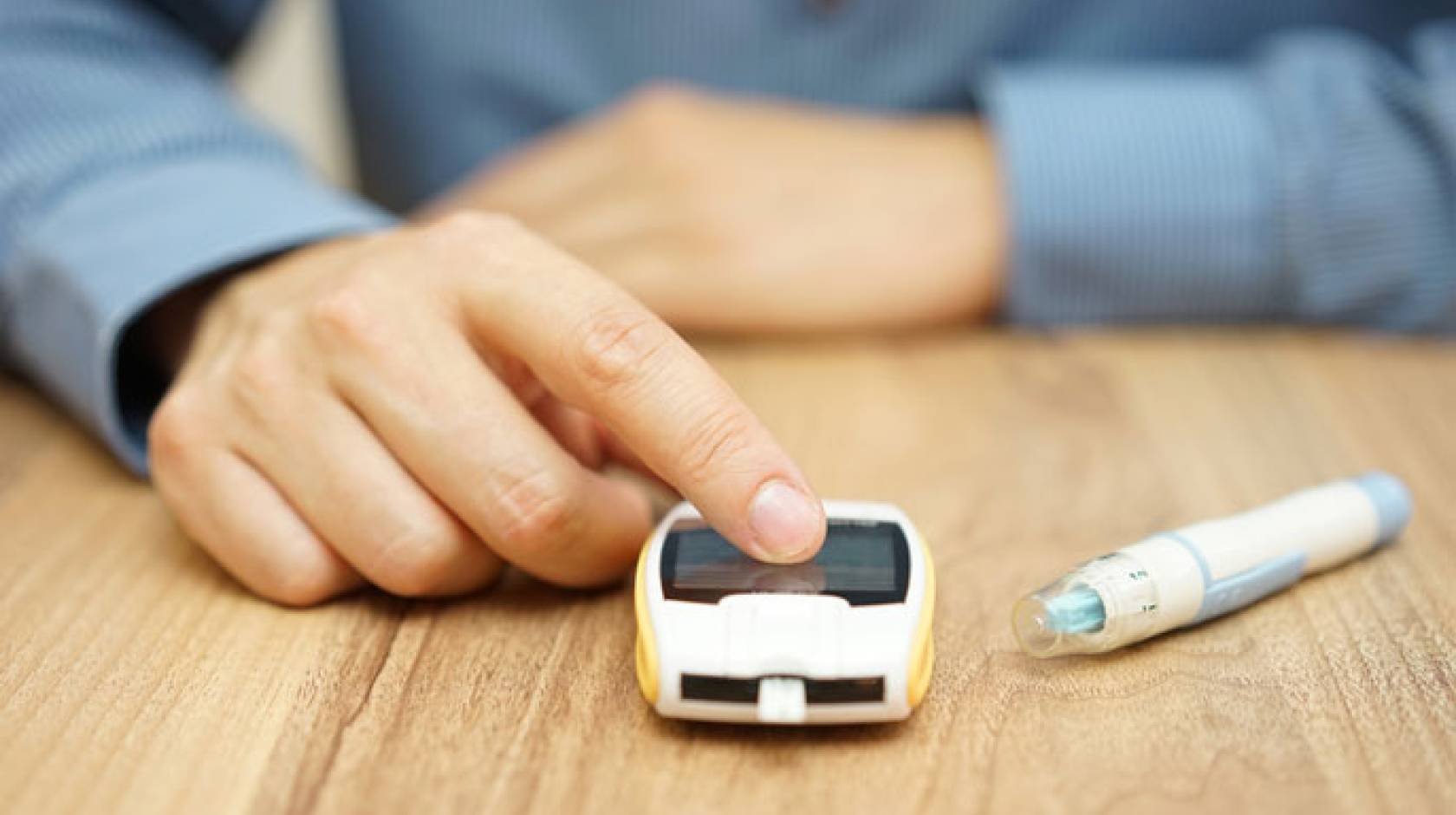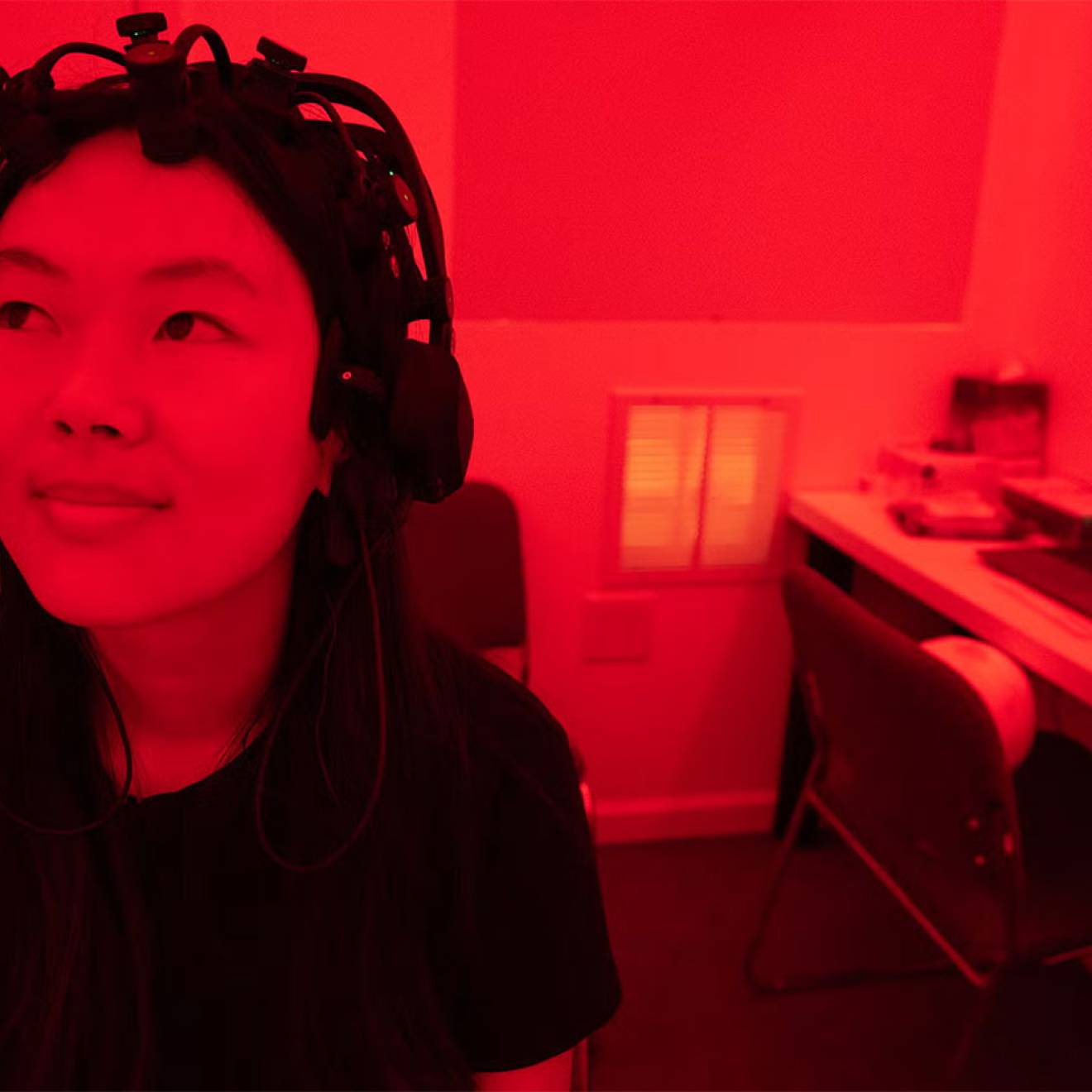Tom Vasich, UC Irvine

Unlike Type 2 diabetes, Type 1 diabetes often afflicts the young with an indifference to lifestyle and dietary habits. It begins when the immune system attacks the insulin-producing cells in the pancreas. Insulin is necessary for balancing blood sugar levels, and it allows the body to use these sugars for energy or store glucose for future use. Without this hormone, blood sugar levels will skyrocket, leading to severe health problems and even death.
Type 1 diabetes – also known as juvenile diabetes – is considered a chronic disease that must be managed with insulin injections – every day, for the rest of a person’s life.

Credit: Steve Zylius/UC Irvine
Jonathan Lakey, a University of California, Irvine professor of surgery and biomedical engineering, is a pioneer in an emerging approach to treating Type 1 diabetes, an approach that frees patients from the daily needle jabs. In 2000, he helped create the Edmonton Protocol, a surgical method by which cell clusters called islets can be transplanted into the pancreas to stimulate insulin production, making injections unnecessary. It’s been shown to work, but there are still many hurdles to overcome, such as immune system rejection of the transplanted cells.
With a new $1.3 million grant from the JDRF (formerly the Juvenile Diabetes Research Foundation), Lakey, UC Irvine associate professor of surgery and biomedical engineering Elliot Botvinick and Paul de Vos of the University of Groningen in the Netherlands are continuing to seek a way to transplant insulin-secreting, encapsulated, stem cell-derived islet cells that the immune system will not attack.
“Perhaps the greatest challenge in the field of islet transplantation is to make the metabolic benefits available to patients with Type 1 diabetes without the need for chronic immunosuppression,” says Lakey, who directs the UC Irvine Health Clinical Islet Program. “I believe that this approach has great promise for realizing our goal. And this welcome support from the JDRF should speed our progress.”
Here, he describes his work:
Q: As a co-founder of the Edmonton Protocol, you’re a pioneer in the area of islet cell transplantation for treating diabetes. How does this method work?
A: Our work involved the transplantation of isolated human islet cells recovered from organ donors. Our methods of improved islet cell isolation coupled with novel anti-rejection drugs allowed our program to demonstrate that clinical islet transplantation can work – and let patients become insulin-free. Unfortunately, most patients ultimately had to resume insulin injections, but the principle of islet transplantation was demonstrated. It also showed that the anti-rejection drugs that patients must take are problematic over time.
Q: How did you develop your interest in this area of research?
A: I have had a long interest in organ transplantation. My father was a kidney transplant surgeon in Canada, and I worked as a student in the hospital helping keep the kidneys alive before transplantation. Diabetes has a high prevalence in the province of Alberta, where I’m from, so there’s considerable research into finding treatments for this disease. Islet transplantation was a focus, and I was fortunate enough to be able to learn and be a co-founder of the transplant procedure later named the Edmonton Protocol. It was a huge team effort.
Q: What’s distinctive about the JDRF work you and your UC Irvine colleague Elliot Botvinick are doing? How are you addressing the rejection issue?
A: Our research is focused on a coating that can protect the transplanted islets and eliminate the need to take lifelong anti-rejection drugs. The JDRF has created an encapsulation consortium, a group of like-minded researchers trying to do the same thing. Our specific grant is to establish a transplant site that has sufficient blood vessels to improve islet survival after transplantation. We’re also using a system developed in our labs that’s able to determine oxygen levels within the islets. This is important, as oxygen supply is critical. These cells are encased in an ultrapure algae membrane. The encapsulation chemistry allows for selective permeability, meaning that some small molecules, such as glucose and insulin, can pass through the membrane, while large antibodies and immunological molecules are blocked from entering the space containing the islets.
Q: When in the course of an individual’s diabetes would this treatment be administered?
A: I hope we can establish islet transplantation as a potential therapy for Type 1 diabetic patients early in the course of their disease, before they’ve lost all of their insulin-producing islet cells. If we can transplant without the need for chronic anti-rejection drugs, we can treat more patients; and if we can come up with an unlimited source of cells, we can treat even more patients.
Q: You recently formed a collaboration with the Argentine government. What’s the focus of that work?
A: Our efforts are supporting a group in Buenos Aires who are transplanting isolated piglet islets that are encapsulated in a specific biomaterial. This group has government support and has initiated a series of transplants in patients with diabetes. Initial results showed some function, and we hope that once they incorporate our novel approaches, we can see patients become insulin-free with the encapsulated piglet islets.
Q: You and Elliot have also been active in the UC Irvine student Business Plan Competition, with your teams receiving top awards in 2015 and 2016. What’s the nature of your teams’ involvement?
A: Yes, along with some very capable students in our labs, we were fortunate to win the Business Plan Competition the past two years. Our 2015 team, Kapsoulas TherapeutiX, created a treatment for diabetic pets using islet transplantation. We have now started a company called Sanatio Therapeutics Inc. to treat diabetic dogs and cats using some of the same approaches we’re taking to treat people with Type 1 diabetes. There’s a growing prevalence of diabetes in pets, and currently there are no options. Insulin treatment doesn’t work in the long term, and diabetic complications occur just as in human diabetics.
Our 2016 entry, Sher Biomedical, was awarded for a technology that allows us to put a device under the skin, wait a period of time for new blood vessels to surround the device and then place the encapsulated islets into the blood-rich space, or pocket, that we’ve made. It’s still in the development and validation phase, but we’re keen on this. We hope that this will let us transplant islets, achieve normal blood glucoses and replace islets over time.
I want to see our research efforts with these student teams and in the lab move forward, and for some technologies, it’s best to spin them off into UC Irvine startups, which enables us to get assistance from those with expertise in business and clinical trials so that one day these innovative treatments can reach patients.

